When I opened my email this morning I found an article about the United Kingdom banning Shark Finning and the import of Shark Fin products. Their attorney general said in a press statement, "We have decided to ban the import of detached shark fins as well as shark fin products. The practice is also unforgivably wasteful and our action will not only help boost shark numbers, but it will also send a message that we do not support any such industry that forces species to the brink of extinction.”
You’ll think, good move and I agree - but taking a closer look, is it really enough or is it just another piece of legislature, which is supposed to let us sleep better, while the wheels of the Shark Killing Industry keep on spinning?
[spacer] 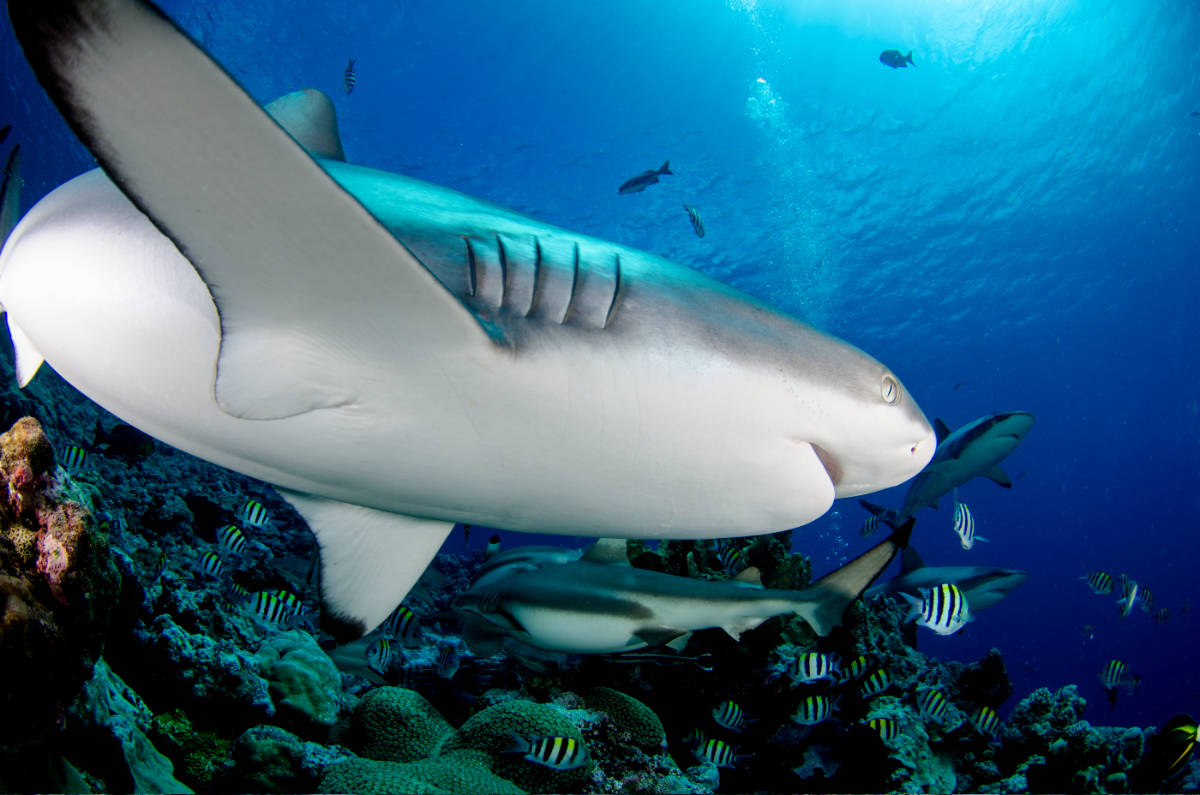 [panel color="#e88934" icon="icon: star" icon_color="#ffffff" border="1px double #e88934" shadow="5px 3px 3px #8d917e" margin="15px 0px 15px 0px" text_align="center" radius="5px"]
[panel color="#e88934" icon="icon: star" icon_color="#ffffff" border="1px double #e88934" shadow="5px 3px 3px #8d917e" margin="15px 0px 15px 0px" text_align="center" radius="5px"]
Table of Content
UK Banning Shark Finning   •   Are the United Kingdom no longer in the Shark Trade?  •   What is Shark Finning?  •  How did Palau Contribute to the International Protection of Sharks?  •  Who are the main actors in the Shark Finning Worldwide?  • Is the Shark Fin trade just a part of the global problem?  •  In which Countries is Shark Finning fully or partially banned?  •  What is the effect of the Shark Trade on the Shark Population?  •  Which sharks are threatened with extinction? • What is Micronesian Shark Foundation?
Is it enough to ban Shark Finning? - Synopsis
[/panel] 
Are the United Kingdom no longer in the Shark Trade?
The United Kingdom government has formally announced that the trade in shark fins will be prohibited under new legislation, which is part of the government's Animal Care Action Initiative, a comprehensive plan to end animal cruelty and improve animal welfare. However, it will still engage in all other kinds of trade with shark products. Sharks are widely acknowledged to play an important part in the success of marine ecosystems, yet many shark species are under severe population pressure, mostly owing to overfishing. The International Union for Conservation of Nature (IUCN) lists 143 shark species as "threatened," with distinct species ranging from "vulnerable" to "critically endangered.”
Shark finning, has been prohibited in the European Union for nearly two decades. Separating fins from sharks that are landed intact, on the other hand, is still lawful. And it is permissible to transfer up to 20kg of fins throughout the European Union 'for personal consumption’. Because it is hard to identify the origins of a detached shark fin, this “legal trade” in fins serves as a cover for the shark-finning industry. Considering some studies, which indicate a fin-carcass-ratio of 2% we are talking of 1,000 kg shark carcasses per 20 kg shark fins. Meaning about 29 grey reef sharks killed and finned for “personal consumption”.
The restriction on the import and export of shark fins in the United Kingdom will be expanded to encompass not only shark fins, but all shark fin-containing goods, such as shark fin soup and other products. It is interesting to know that between 2017 and 2018, the United Kingdom exported 83 tons of shark fin (about 200,000 sharks were slaughtered), and a personal allowance of 20kg was allowed to be brought into the country. However, the trade of other shark products, like shark meat products will continue. Shark Fins produced by local fishermen in the United Kingdom will satisfy local demand for shark fins taken from landed sharks. The question I am asking myself is if the new Shark Fin Ban is an actual win for our sharks and oceans or just for the UK economy by keeping non UK fins out and securing the UK market for their local industry?
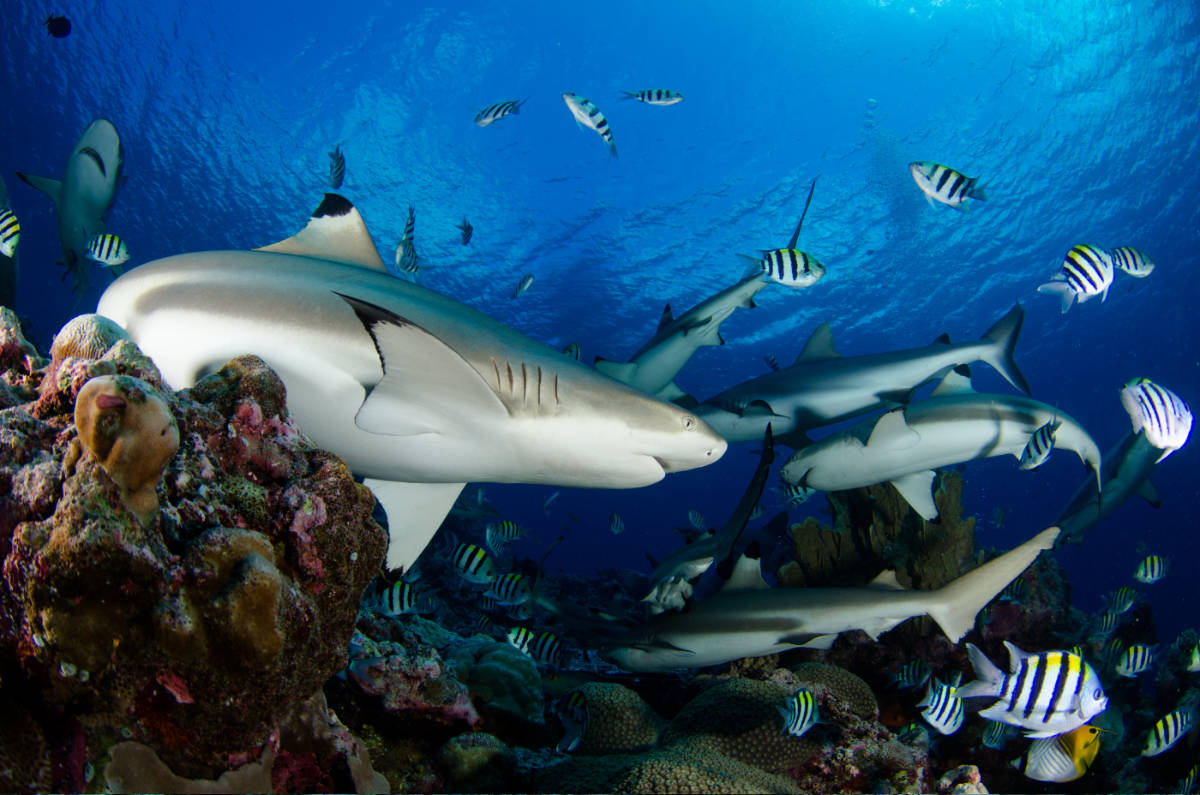
How did Palau Contribute to the International Protection of Sharks?
In 2009, Palau founded the first Shark Sanctuary in the world.
Palau's Shark Haven Act. By declaring its whole exclusive economic zone a shark sanctuary, Palau has taken the lead in combating shark population decrease and safeguarding biodiversity in the surrounding oceans. By protecting a healthy ecology, the outstanding attitude against commercial exploitation of sharks and rays benefitted other species as well. The economic benefits of outlawing shark hunting are also clear: the shark diving sector pays local communities US$1.2 million in salary and earns US$1.5 million in taxes for the Palauan government each year.
“Palau is so fragile and it is so beautiful that you just have to take the responsible action and minimise the risk that would destroy all of this for our children and future children”. Thomas Remengesau, Jr. President of Palau
[spacer] [social_share googleplus="no" linkedin="yes" pinterest="yes" telegram="yes"] [spacer] [spoiler style="fancy" icon="chevron" title="What is Shark Finning?" anchor="finning"]
What is Shark Finning?
The act of removing shark fins and dumping the rest of the shark back into the ocean is known as shark finning. Many governments have made this act illegal. When sharks are abandoned, they are typically still alive but without their fins. Because they are unable to swim successfully, they fall to the ocean's bottom and suffocate or are eaten by other predators. Shark finning at sea allows fishing vessels to enhance profits and catch more sharks because they only have to store and carry the fins, which are by far the most profitable portion of the shark; shark meat is bulky to transport. Some countries have outlawed the practice, requiring the entire shark to be returned to port before the fins are removed. Shark finning has surged since 1997, owing to rising demand for shark fin soup and traditional treatments, mainly in China and its territories, as a result of the country's economic expansion, as well as improved fishing equipment and market economics. Shark fin soup replacements have recently hit the market, and they don't require shark fins.
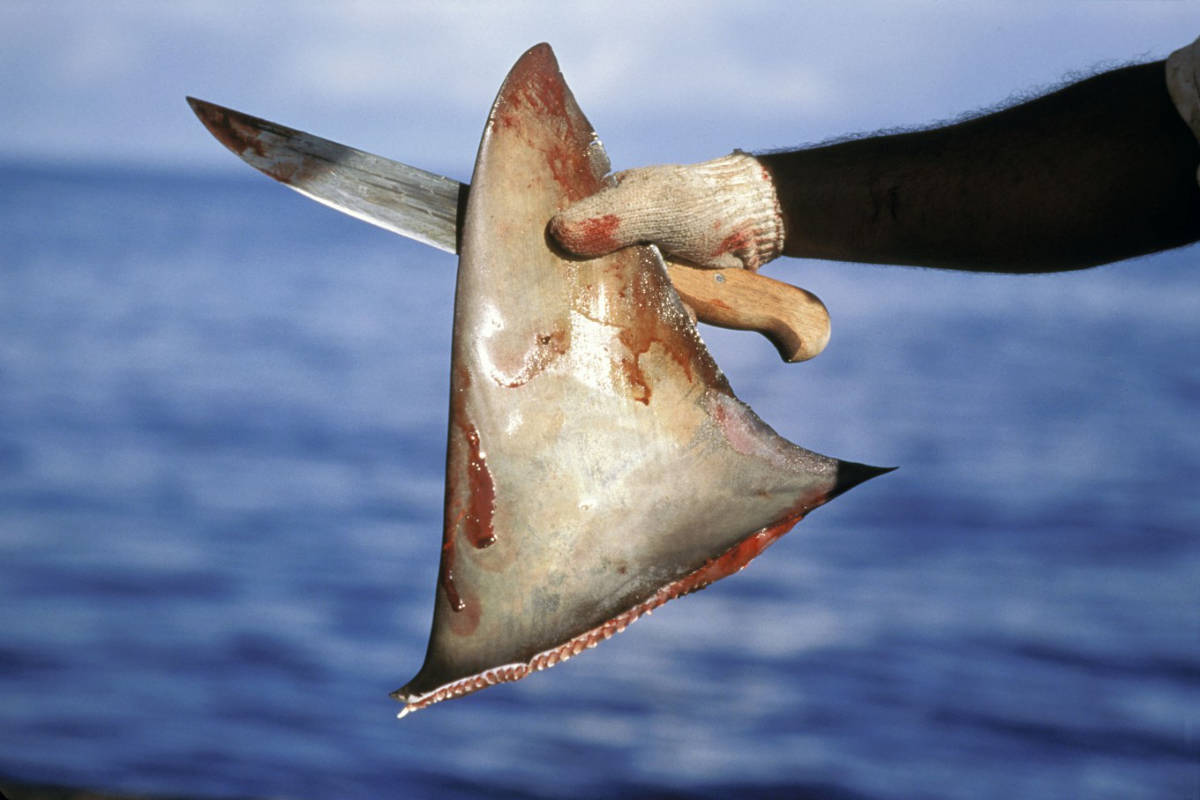
Shark finning is ubiquitous, according to the International Union for Conservation of Nature's Shark Specialist Group, and "the fast rising and mostly unregulated shark fin trade poses one of the most serious threats to shark populations globally." The global worth of the shark fin trade is estimated to be between US$540 million to US$1.2 billion (2007). Shark fins are among the most costly seafood items, costing up to $400 a kilogram. Some buyers perceive the whale shark and the basking shark as trophy species in the United States, where finning is forbidden, and pay $10,000 to $20,000 for a fin. The regulated global catch of sharks reported to the United Nations Food and Agriculture Organization has been constant in recent years, averaging just over 500,000 tonnes per year. Unreported and unregulated captures are also known to be widespread. Shark finning has wreaked havoc on the ocean's environment. Every year, between 73 and 100 million sharks are fished. Shark finning poses a threat to sharks, oceans and hence people.
[/spoiler] [spoiler style="fancy" icon="chevron" title="Who are the main actors in the Shark Finning Worldwide?" anchor="actors"]
Who are the main actors in the Shark Finning Worldwide?
Shark Fin Trade
The vast majority of shark fins are consumed in a small number of East and Southeast Asian countries and territories, including China, Hong Kong, Taiwan, Singapore, Malaysia, and Vietnam. The world's top consumers of shark meat are found in South America and Europe, with Italy, Brazil, Uruguay, Spain, and South Korea - the latter being the world's largest importer of skate and ray meat – being the most prominent importers. In the case of shark fins, the term "exporters" refers to both primary producers like Indonesia and Spain, whose vessels catch the sharks, and re-exporters, which can be further divided into pure dealers like the United Arab Emirates and processing traders like China.

This classification is useful but not perfect, as most countries participate in all three activities, albeit to varying degrees. In addition to being one of the world's largest consumer markets for shark fins, Hong Kong has long been the world's most important trader, accounting for the majority of recorded imports and value since data began to be collected, and establishing itself as the world's largest exporter from the late 1980s onwards. Hong Kong is also remarkable for being the only customs territory that has historically maintained separate commodity codes for frozen, dried, processed, and unprocessed shark fins in its trade database. Hong Kong is not a producer, and its outgoing trade is almost entirely made up of shark fins purchased from shark-catching countries or regional traders and then re-exported. Singapore plays a comparable role in the global shark fin industry, although China and Taiwan, in addition to consuming, importing, processing, and trading fins, generate considerable numbers of shark fins domestically.
[/spoiler] [spoiler style="fancy" icon="chevron" title="Is the Shark Fin trade just a part of the global problem?" anchor="fintrade"]
Is the Shark Fin trade just a part of the global problem?
Although the aforementioned issues with data quality and reliability that characterize shark fin trade and shark capture statistics make it difficult to quantify the relative importance of each individual producing country, Spain, Indonesia, Taiwan, and Japan are the world's major shark fin exporting producers. It's further very difficult to explain the function of countries like Costa Rica, which appear to not only produce shark fins domestically but also serve as significant trading centers for neighboring countries and international fleets fishing in the nearby waters. Another factor driving this increase could be the widespread application of finning regulations, which compel shark carcasses to be landed with their fins – frequently at a 5% fin-to-carcass weight ratio – potentially resulting in the establishment of markets for the meat.
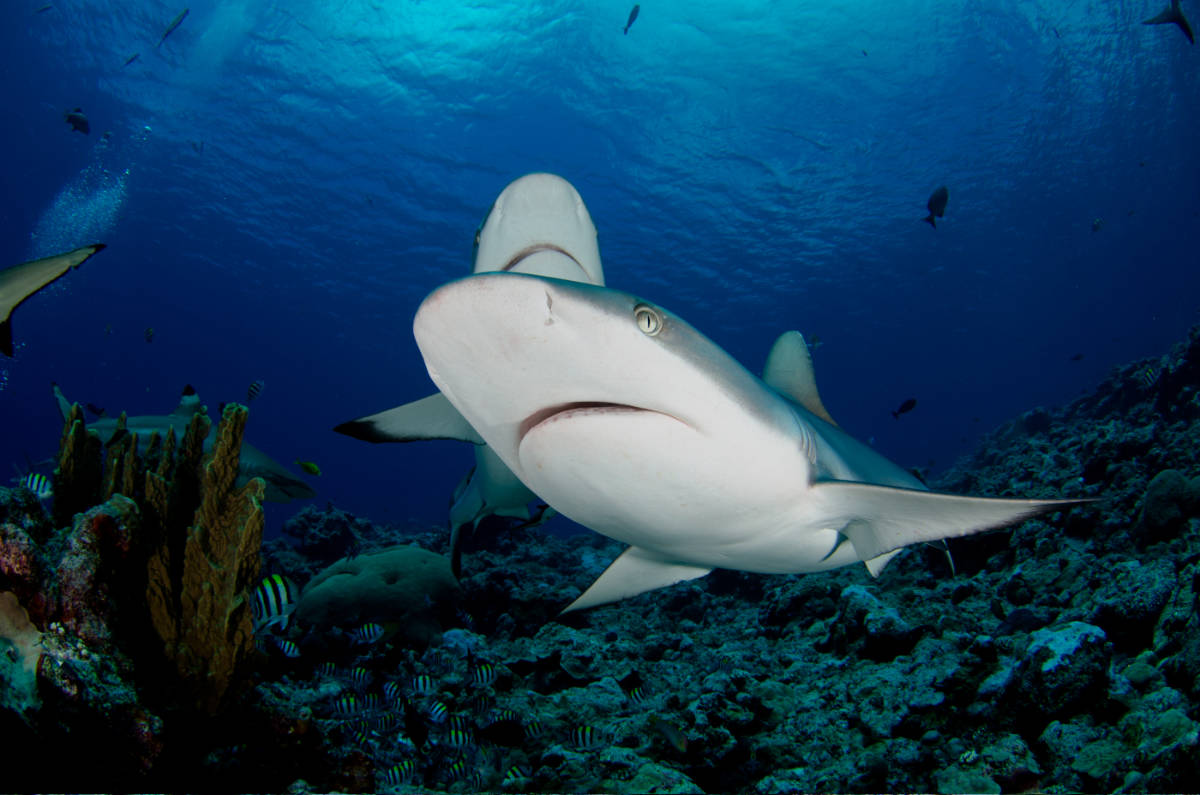
However, it is crucial to note that, even as global supply volumes increase, the trend of rising unit values for traded shark meat across many key trading countries indicates robust and growing underlying consumer demand. Considerable manufacturers such as Spain and Taiwan now export large volumes of shark meat to their respective major markets of Italy and Brazil, in addition to their position as suppliers to the shark fin markets. Uruguay has also established itself as a major re-exporter of processed shark flesh, servicing the rapidly growing Brazilian demand for shark goods. Dogfish species (a shark species) appear to be preferred in European and North American markets such as the United States of America, Italy, and France, though this may be impacted by sanitary rules prohibiting the import of larger shark species due to high mercury levels. In contrast, demand in the South and Central American and Asian markets appears to be mostly for larger species. The Republic of Korea is unique for importing very tiny amounts of real shark meat while accounting for the vast bulk of skate and ray meat imports worldwide. In general, shark meat markets are significantly more diverse and geographically distributed than shark fin markets, and as a result, there is a lot of room for growth.
[/spoiler] [spoiler style="fancy" icon="chevron" title="In which Countries is Shark Finning fully or partially banned?" anchor="countries"]
In which Countries is Shark Finning fully or partially banned?
- Israel (1980) no shark fishing
- Congo-Brazzaville (2001) no shark fishing
- Ecuador (2004) no direct shark fishing in Ecuadorian waters, but sharks caught elsewhere may be landed in Ecuador
- Egypt (2005) no shark fishing and commercial sale of sharks
- French Polynesia (2006) no shark fishing, with exception of Mako sharks
- Mexico (2007) no finning; (2011) no shark fishing from May to August
- Guinea-Bissau (2008) no shark fishing in marine protected areas
- Palau (2009) World’s First Shark Sanctuary Palau
- Honduras (2010) no shark fishing
- The Republic of Maldives (2010) no shark fishing
- The Marshall Islands (2010 no commercial shark fishing or sale of shark products
- Indonesia (2010) no shark fishing in Raja Ampat
- The Cook Islands (2012) no commercial shark fishing, sale, or trade of shark products
- The Bahamas (2011) no commercial fishing, sale, or trade in shark products
- Marshall Islands (2011) no commercial shark fishing or sale of shark products
- Tokelau Islands(2011) no shark fishing in territorial waters
- Sabah, Malaysia (2011) no shark fishing, no possession and sale of fins
- Brunei (2013) no harvest and importation of shark products
- Fiji (2013) no shark fishing
- UK Virgin Islands (2014) no commercial fishing of sharks or rays
- United Arab Emirates (2014) no shark fishing from February 1 to June 30 and banned all imports and exports of shark products
- Kiribati (2015) no commercial fishing in the Phoenix Islands Protected Area and Southern Line Islands
[/spoiler] [spoiler style="fancy" icon="chevron" title="What is the effect of the Shark Trade on the Shark Population?" anchor="effect"]
What is the effect of the Shark Trade on the Shark Population?
According to some estimates, 26 to 73 million sharks are killed for their fins each year. The yearly median from 1996 to 2000 was 38 million, approximately four times the number reported by the United Nations' Food and Agriculture Organization (FAO), but significantly lower than many conservationists' projections. The global shark catch in 2012 was estimated to exceed 100 million. Sharks have a K-selection life history, which means they grow slowly, attain maturity at a larger size and later age, and reproduce infrequently. These characteristics make them particularly vulnerable to overfishing techniques like shark finning. Recent research suggests that changes in apex predator abundance may have a cascade effect on a range of ecological systems.
Over the last 50 years, the population of some shark species has decreased by as much as 80%. Some organizations say that shark fishing or bycatch (unintentional capture of animals by other fisheries) is to blame for the decrease of some species' populations, and that the fin market has no impact — bycatch accounts for an estimated 50% of all sharks taken. Others claim that the fall is due to a drop in the demand for shark fin soup.
[/spoiler] [spoiler style="fancy" icon="chevron" title="Which sharks are threatened with extinction?" anchor="sharks"]
Which sharks are threatened with extinction?
There are 39 species of elasmobranches (sharks and rays) recognized as threatened on the IUCN Red List (Critically Endangered, Endangered or Vulnerable). [28] [verification failed] Sharks were categorized as vulnerable by the Convention on International Trade in Endangered Species of Wild Fauna and Flora (CITES) in 2013.
Appendix I, which contains a list of endangered animals, has a list of
- Requiem sharks (i.e. Tiger Sharks, Bull Sharks, etc.)
- Hammerhead sharks
- Thresher sharks
- Basking sharks
- Mackerel sharks
- Eagle and mobulid rays
- Freshwater stingrays
- Whale sharks
- Sawfishes
Appendix II, contains a list of creatures that are not currently threatened with extinction but may become so if trade is not strictly regulated.
- Basking shark (Cetorhinus maximus)
- Great white shark (Carcharodon carcharias)
- Whale shark (Rhincodon typus)
A further five species are listed as of 2014
- Scalloped hammerhead (Sphyrna lewini)
- Great hammerhead shark (Sphyrna mokarran)
- Smooth hammerhead (Sphyrna zygaena)
- Porbeagle (Lamna nasus)
- Oceanic whitetip shark (Carcharhinus longimanus)
[/spoiler] [spoiler style="fancy" icon="chevron" title="What is Micronesian Shark Foundation?" anchor="msf"]
What is Micronesian Shark Foundation?
At Fish ’n Fins and Ocean Hunter Palau we feel that we have to be part of the solution, which is why our directors and some of our employees have founded the Micronesian Shark Foundation. The Micronesian Shark Foundation is a non-profit, non-government organization founded in Palau to advocate shark protection and research. The foundation was established in 2002 by Tova Harel Bornovski, Navot Bornovski and Kenneth Johnny. The idea was to facilitate the study of sharks throughout Micronesian waters, particularly in Palau to further shark protection in Micronesia and other countries. The Foundation was carried by the dedication and hard work of its founders. The Government of Palau, especially Koror State, has taken a lead role in conservation management and environmental protection and have supported the Foundation right from its start.

In its dedication to science and shark protection the Micronesian Shark Foundation teamed up with The National Geographic Society, which contributed its advanced Crittercam technology under the guidance of Prof. Greg Marshall from Boston University. Phillip Lobel provided scientific leadership and advanced acoustic technology during the first project. The main supporter through all the years of the Foundation’s existence was and is Palau’s premium dive operator Fish ’n Fins, which has supported the foundation by contributing boats and fuel, equipment, vast amounts of man hours of their staff, logistic support and a base center for the foundation. Fish ’n Fins as the foundation’s main contributor is and has been a role model in engagement in environmental protection and local community activities.
Dr. Mark Meekan from the Australian Institute of Marine Science (AIMS) has spearheaded projects as lead scientist since 2003 and has tirelessly forwarded projects in cooperation with the Micronesian Shark Foundation. Dr. Gabriel Viana did most of his PHD thesis with Micronesian Shark Foundation support. Dr. Barbara Block of Stanford University is currently leading Oceanic Shark research with her team: Dr. Francesco Ferretti, Dr. Dan Madigan, Dr. Robbie Schallert, Ph. D. candidate Tim White, Ph. D. candidate Natalie Arnoldi. Due to the exceptional conservation efforts of Palau, which declared Palau a Shark Sanctuary in 2009 and continuous efforts to protect its islands and waters, our ocean is rich with fish and healthy corals. This makes it an ideal location to collect data, which not only has relevance for Palau and Micronesia but also for conservation specialists and scientists worldwide. Considering that roughly one third of all sharks (per IUCN red list) are threatened to extinction or have already disappeared from our planet, ( makes) the work of the Micronesia Shark Foundation is more relevant and important than ever.
[/spoiler] 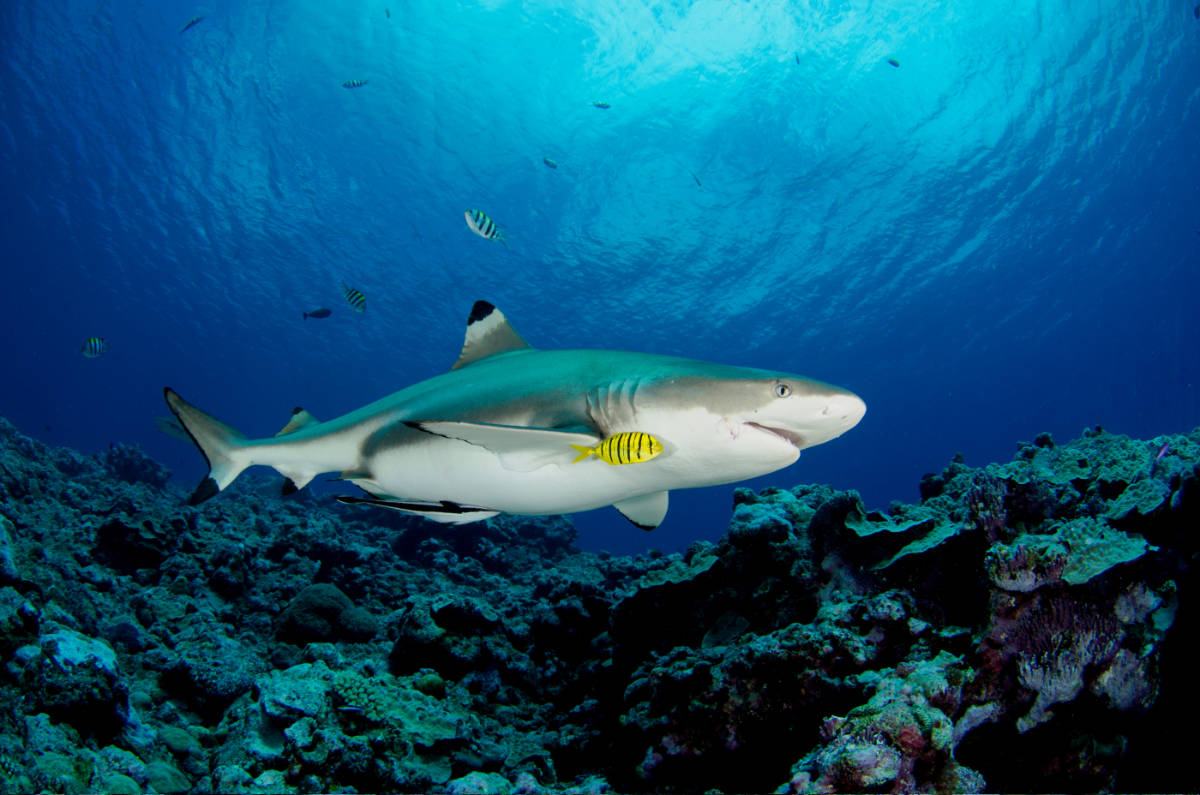
Is it enough to ban Shark Finning? - Synopsis
The Anti Shark Finning Movement has shed light on the Shark Fins trade in recent years. Some countries felt the pressure and passed shark finning legislature. But if you look at the numbers and the sales that are made from trading sharks, it seems that some countries have seen their legislation merely as a PR stunt and left significant back doors open, which still allow them to drive shark populations around the world to extinction. We mainly read about the harmful practices of the shark fin trade in Asia and western media point fingers at Hong Kong, but it seems that we forget that countries like Spain, Portugal, the USA and Uruguay make the highest profit of the shark trade.
Any legislature that only bans the finning of sharks just scratches the surface. Laws, like for example in Palau, have to scrutinize and forbid the entire catch and sale of shark products.
We are in the process of removing sharks from this planet for good and need laws without backdoors. Even if the enforcement of these laws seems unlikely, considering that the 6 biggest shark killers collectively generate about 1.5 billion USD each year on the backs of the sharks and our environment.
A possible solution could be to drive the demand down, which it is more important than ever. It is essential that we control our own habits and not only drive greener cars, but also pay attention to what we eat and whether we are not contributing to damaging our environment beyond repair with our appetite for Frutti di Mare.

